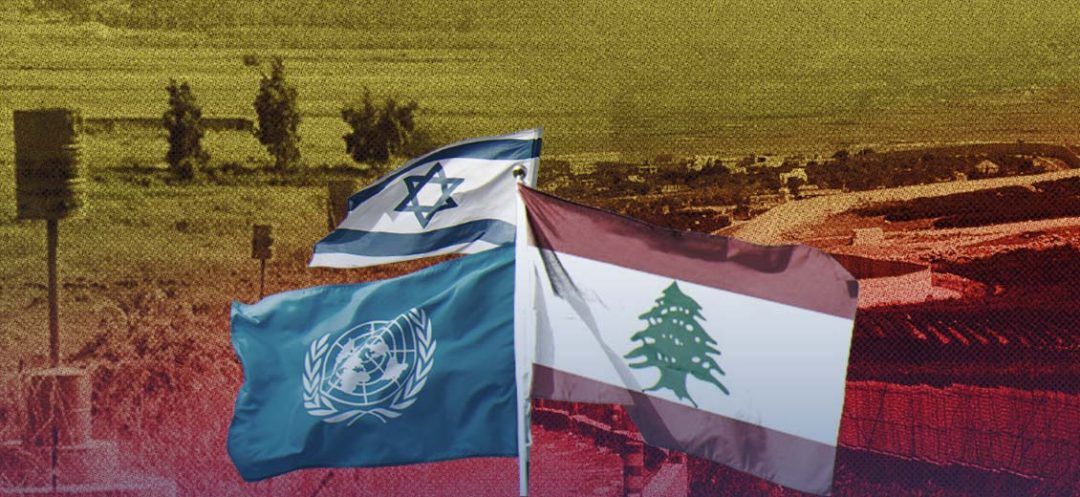
Since the outbreak of armed conflict in South Lebanon on October 8 between Hezbollah and Israel, the Blue Line has been a topic of constant discussion. There is a common misconception that this line represents the border between Lebanon and Israel. What exactly is the Blue Line?
On October 8, 2023, Hezbollah established a “support front” in southern Lebanon for Hamas in its conflict with Israel, which had erupted the day before. Since then, various international and local key players, including the United Nations Interim Force in Lebanon (UNIFIL), have called for a cessation of hostilities on both sides of the Blue Line and for the full implementation of Security Council Resolution 1701.
There is a common but incorrect assumption that this line represents the border between Lebanon and Israel. So, what exactly is the Blue Line?
A Withdrawal Line Established in 2000
In June 2000, the United Nations established the Blue Line, a 120-kilometer withdrawal line, to confirm the complete withdrawal of Israeli forces from Lebanese territory after 22 years of military occupation in southern Lebanon, which began with the 1978 invasion.
According to a press release on UNIFIL’s official website, “This line does not constitute an international border and does not determine any future border agreements between Lebanon and Israel.”
On May 22, 2000, UN Secretary-General Kofi Annan issued a report on the implementation of Security Council Resolutions 425 and 426 (1978). These resolutions call for Israel's complete withdrawal from Lebanese territory and appoint the UNIFIL.
However, the presence of the Israeli state in Lebanon lasted for 22 years and included several military operations: Operation Litani (1978), Operation Peace for Galilee (1982), Operation Accountability (1993) and Operation Grapes of Wrath (1996).
Hicham el-Achkar (2012), based on George Solley (1987)
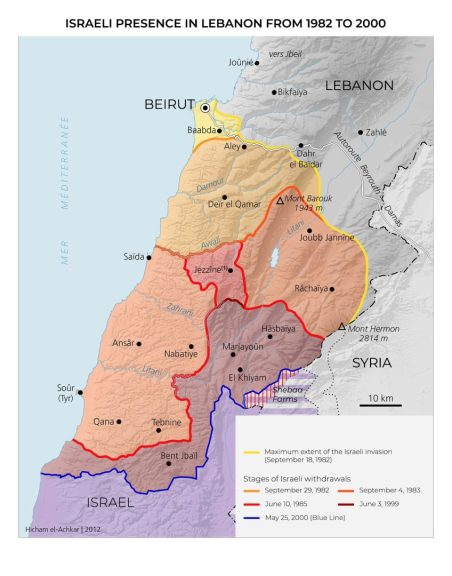
“On April 17, 2000, I formally received notification from the Israeli government of its intention to withdraw Israeli forces from Lebanon beginning in July 2000,” states Kofi Annan’s report.
Following this notification, the Secretary-General took the necessary steps to oversee the Israeli withdrawal under UN supervision.
In this context, the request was made to “determine the delineation of a line in accordance with Lebanon’s internationally recognized borders, using the best available information, including cartographic data,” as per the text.
The report references the international border between Israel and Lebanon, “established under the 1923 agreement between France and Great Britain,” and points out that this boundary “was reaffirmed in the Israel-Lebanon General Armistice Agreement signed on March 23, 1949.”
As part of this initiative, on June 6, 2000, the UNIFIL Commander-in-Chief officially provided the concerned parties with a map of the withdrawal line, known as the Blue Line.
A list of 198 coordinates defining the entire length of the Blue Line was separately sent to the parties on June 23. These two documents remain the only official reference for the withdrawal line.
While Lebanon accepted both the map and the list of coordinates, Israel recognized only the map as the official reference. Both parties committed to fully respecting the line as defined by the United Nations, agreeing that UNIFIL would serve as the sole guardian of the Blue Line and the final arbiter in the event of any violations.
However, both countries have expressed reservations about specific points along the withdrawal line.
Lebanon disputes 13 areas, including the Shebaa Farms and the Kfarchouba Hills. Meanwhile, Israel has not provided details on the number or locations of its contested areas.
Hicham el-Achkar (2012), based on the Lebanese army
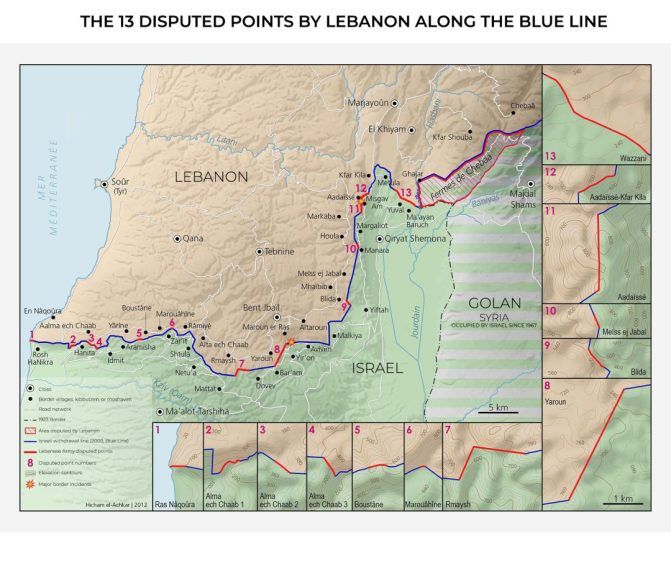
The Blue Line Uncovered
In the spring of 2007, UNIFIL initiated a project to visibly mark the withdrawal line on the ground in collaboration with the involved parties. The goal was to clearly define the line for both the public and military personnel, to prevent violations and accidental crossings.
UNIFIL estimated that more than 541 markers would be needed, with 4 markers placed per kilometer, to ensure the line is clearly visible along its 120-kilometer length.
As of March 2023, 272 markers had already been installed. Each marker location is agreed upon by the parties before a marker is placed on site and made visible with a blue barrel.
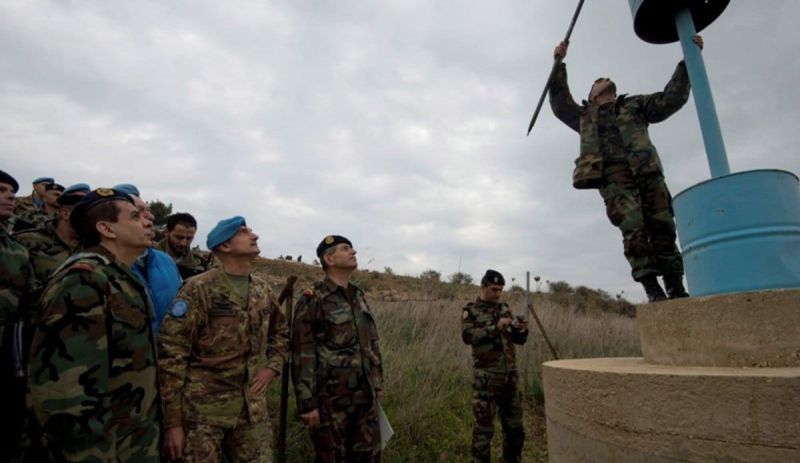 General Luciano Portolano, Chief of Mission and Commander of UNIFIL, with Lebanese Army generals Antoun Mourad and Hassan Bachrouch, marking the Blue Line in the vicinity of Kfar Kila in July 2017. Source: UNIFIL official website
General Luciano Portolano, Chief of Mission and Commander of UNIFIL, with Lebanese Army generals Antoun Mourad and Hassan Bachrouch, marking the Blue Line in the vicinity of Kfar Kila in July 2017. Source: UNIFIL official websiteThe 1949 Armistice Line
The armistice agreement between Israel and Lebanon was signed in Ras al-Naqoura on March 23, 1949. This agreement is part of a series of bilateral accords finalized in 1949 under UN supervision, between Israel and four neighboring countries: Syria, Egypt, Jordan and Lebanon.
These agreements followed the first Arab-Israeli war, which erupted after the declaration of the State of Israel on May 14, 1948. Referred to as the Palestine War (May 15–June 11, 1948), the conflict aimed to protect the Palestinian people from the newly established Israeli state.
On January 7, 1949, a ceasefire ended the hostilities, and negotiations began on the Greek island of Rhodes on January 12.
The 1949 Lebanese-Israeli armistice agreement established a demarcation line, which military forces are prohibited from crossing and within which military presence is to be purely defensive.
This armistice line follows the international border between Lebanon and Palestine as defined in Article V of the Paulet-Newcomb Agreement of March 7, 1923. This agreement provided the first official delineation between the territories of Greater Lebanon and Palestine at that time.
The 1923 demarcation line became the benchmark boundary, adapted with some modifications in subsequent agreements.
The 1949 commission adopted the 38 separation points established by the Paulet-Newcombe Agreement and added new ones, bringing the total number of boundary points to 141.
The Official 1923 Border
The Paulet-Newcombe Agreement, dated March 7, 1923, establishes the boundary between French-mandate Syria and Lebanon and British-mandate Palestine. Lieutenant Colonels Paulet and Newcombe, representing France and Britain respectively, were responsible for mapping the borders and drafting the agreement.
This agreement builds on the final report (drafted on February 3, 1922) of the French-British convention of December 23, 1920, which delineated the borders between Syria, Lebanon and Palestine. The agreement was then submitted to the League of Nations, the predecessor to the United Nations.
Three maps are appended to this report, detailing the boundary lines as determined by the Commission. The convention identifies 38 reference points for the borders between Lebanon and Palestine.
This agreement is part of the broader effort to delineate the mandate zones in the Middle East, a process that began with the 1916 Sykes-Picot Agreements.
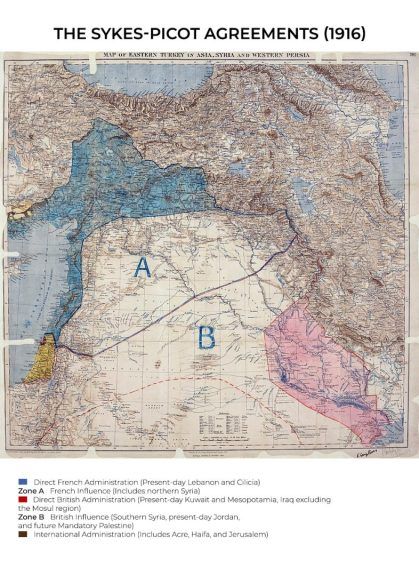
After World War I and the fall of the Ottoman Empire, France and Britain delineated the borders to define the territories under their respective mandates.
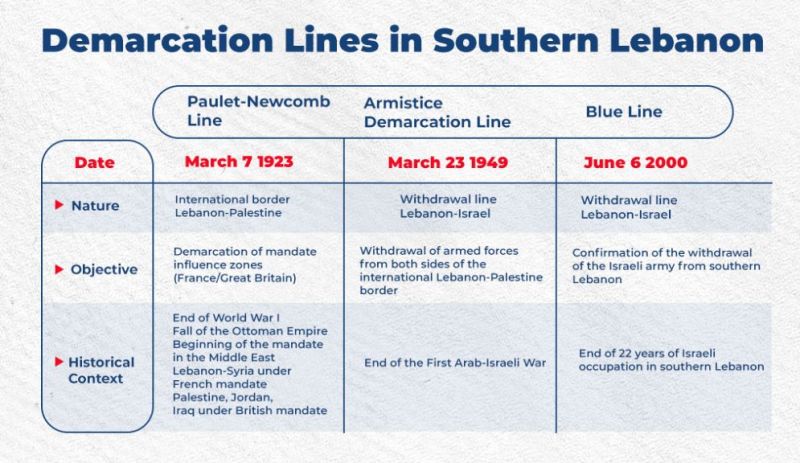
The Blue Line in Resolution 1701
After the 2006 war between Hezbollah and Israel, the United Nations Security Council adopted Resolution 1701 on August 11, 2006, asking for an immediate and complete ceasefire.
The resolution calls for the Lebanese government to deploy its army in South Lebanon and reinforce the mandate of the UNIFIL.
Resolution 1701 specifically calls for the establishment of a buffer zone, defining the area south of the Litani River as “demilitarized.” Under this resolution, Hezbollah and other militias, including Palestinian groups, are not allowed to maintain an armed presence in this area.
The resolution also emphasizes respect for the Blue Line and affirms Lebanon's territorial integrity, sovereignty, and political independence within its internationally recognized borders, “as stipulated by the armistice agreement of March 23, 1949.”
Moreover, the Blue Line is described as “the best approximation of the 1923 borderline and the 1949 armistice demarcation line,” according to the UNIFIL press briefing.
Read more
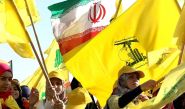


Comments